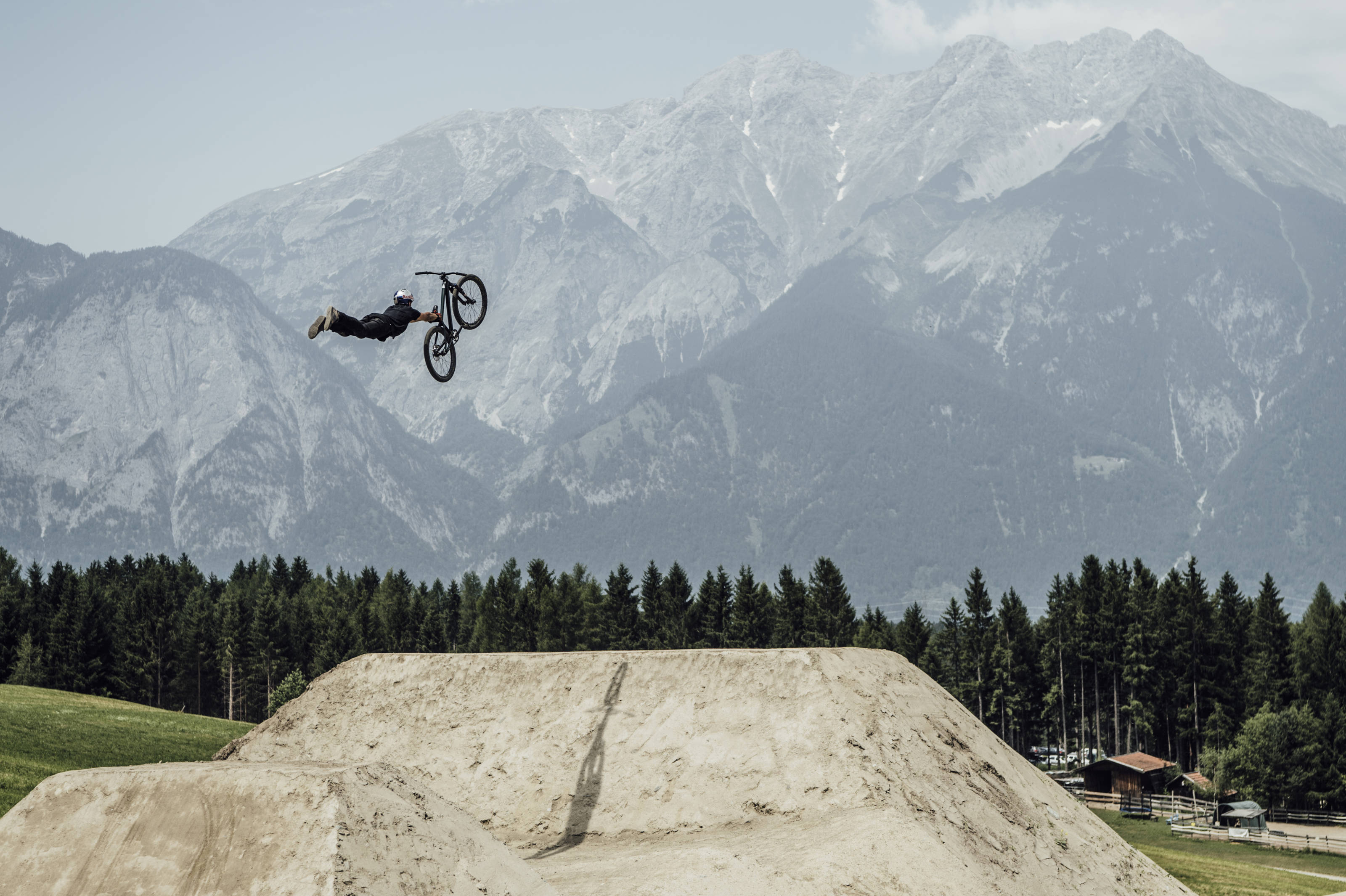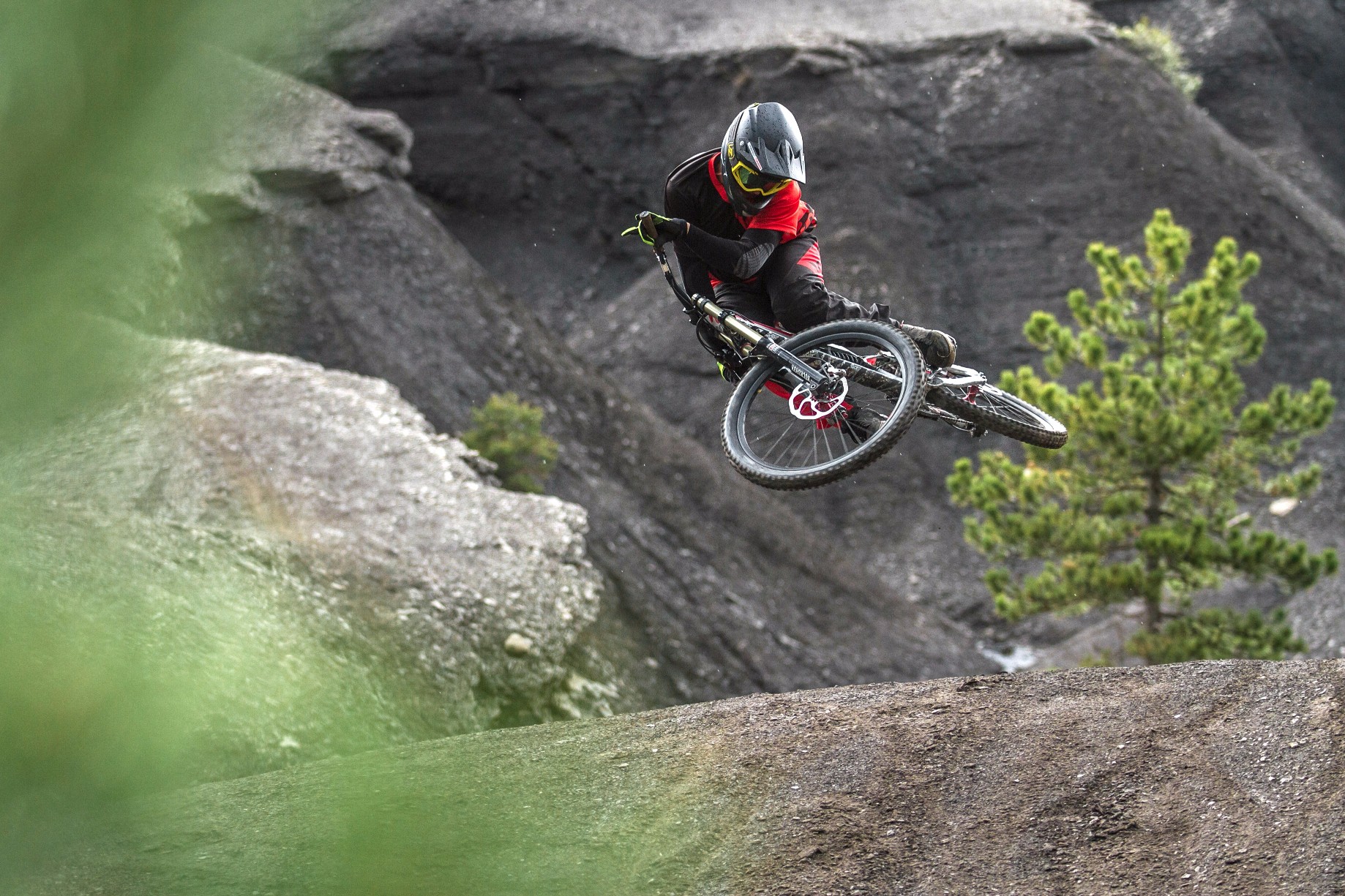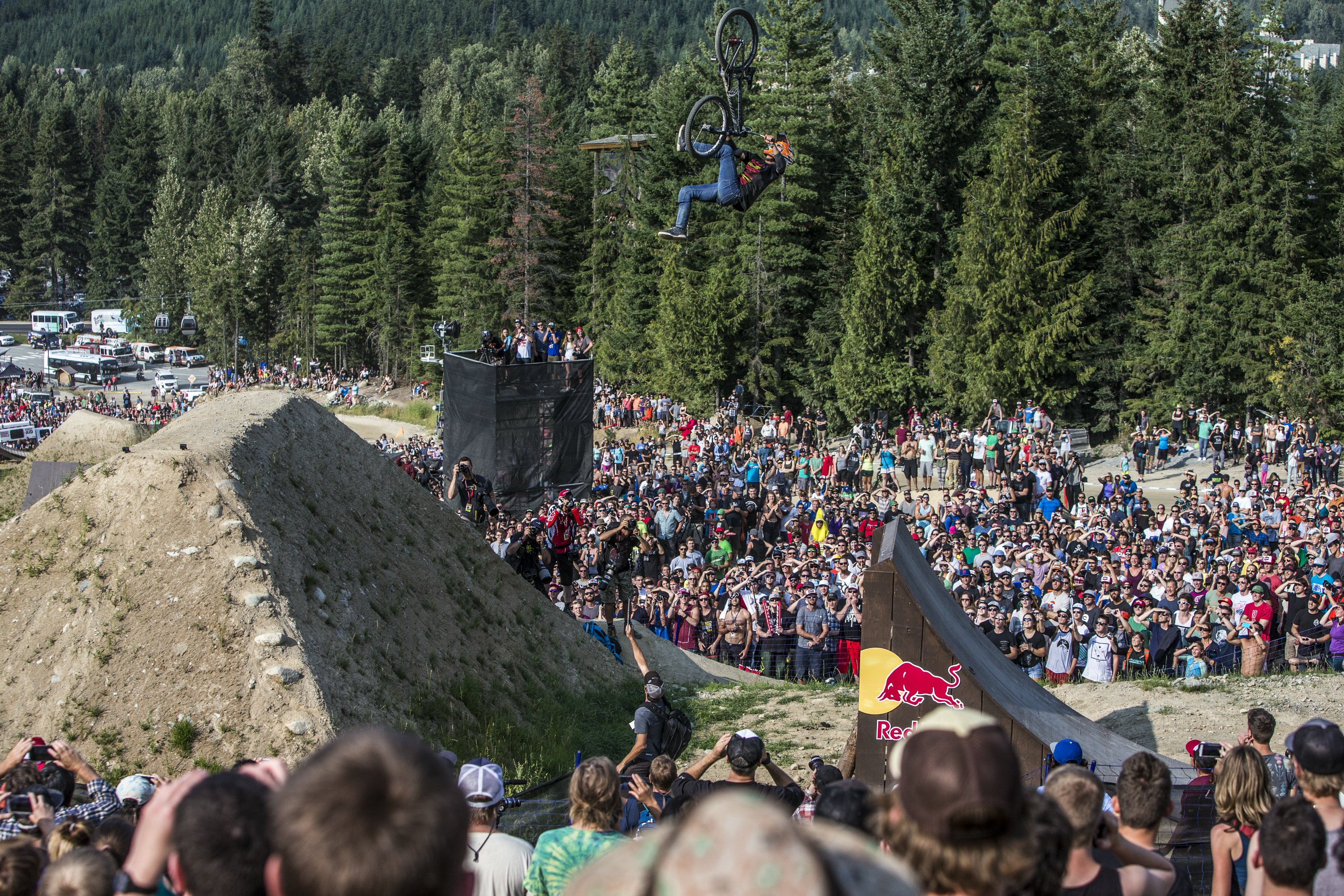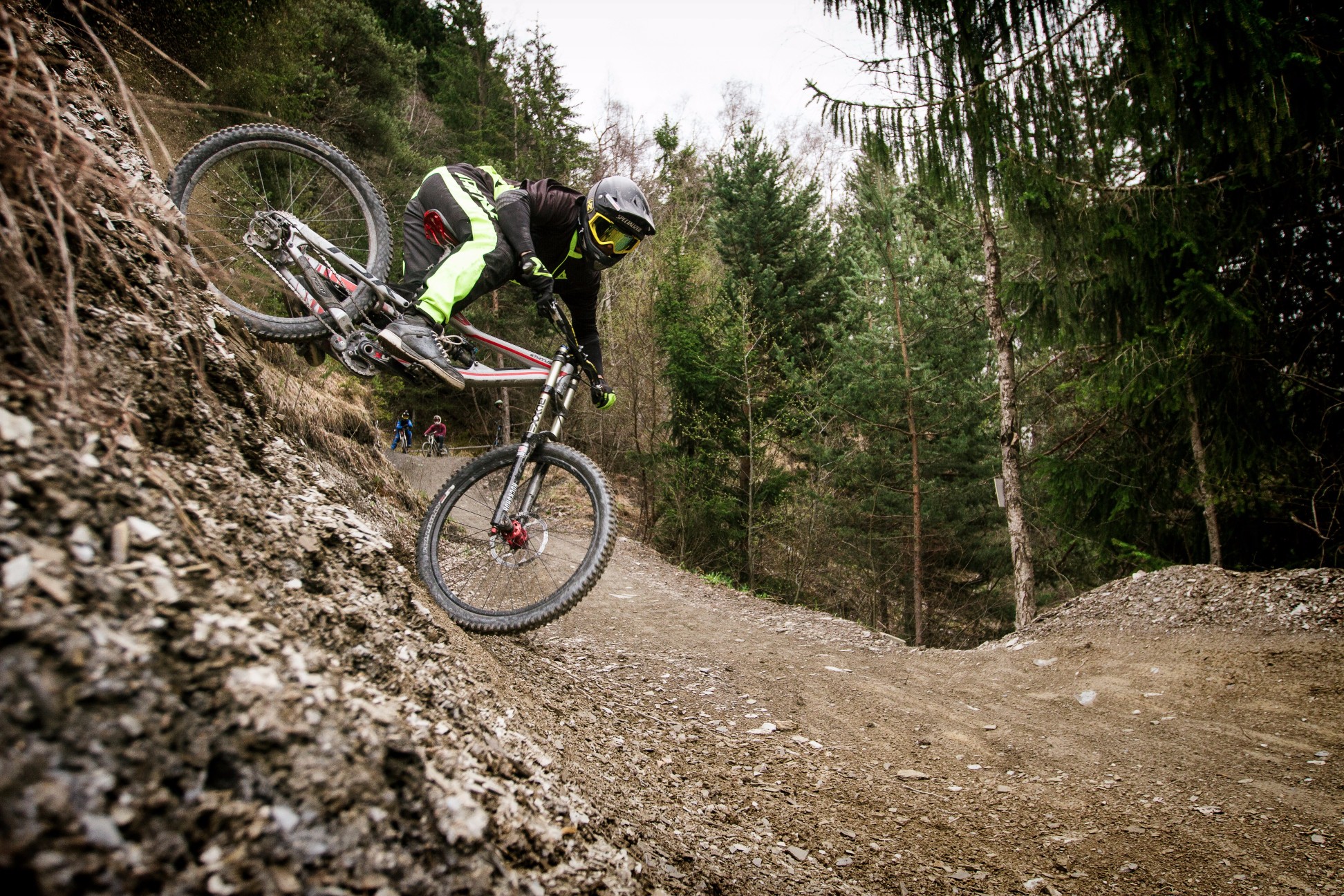We’ve teamed up with Dainese to shine a spotlight on luminaries from across the world of action sports and adventure travel – from big name athletes to epic events that showcase ambition and achievement that goes above and beyond the norm. Dainese-sponsored slopestyle mountain biker Simon Pagès risks it all every time he rides, and does it all for a love of the sport. In this exclusive feature, we head to Crankworx, the premium event in slopestyle mountain biking, to find out more about the method behind the madness.
It was not so long ago that Darren Berrecloth made history by landing a 360 on a mountain bike over a 60ft road gap in a competition run.
That was back in 2005, at Crankworx Whistler. It was dubbed “the 360 heard around the world” due to the roars of the dumbfounded Canadian crowd, and it set the wheels in motion for the future of slopestyle mountain biking.
Those wheels have certainly travelled some distance since then.
Slopestyle has always been a dangerous discipline. It requires the best riders in the world to one-up each other on a course formed from monster jumps, drops and one-of-a-kind features. By its very nature, it is bound to be dangerous. But these days both the size of the kickers and the skills of the competitors are getting increasingly hard to believe.
12 years on from Berrecloth’s ground-breaking run and we’re standing at the foot of the final jump of the slopestyle course in Crankworx Innsbruck.





